Poha dosa is amazingly soft, spongy, porous crepes or pancakes made with flattened rice, idli rice, curd and urad dal batter. Poha is flattened rice and dosa are crepes. Poha has various names. So these dainty fluffy pancakes take the first name of this hero ingredient aka poha and are also called as Atukula Dosa or Aval Dosa or Avalakki Dosa in regional South Indian languages. Serve them with Coconut Chutney or Sambar for a comforting breakfast or lunch.
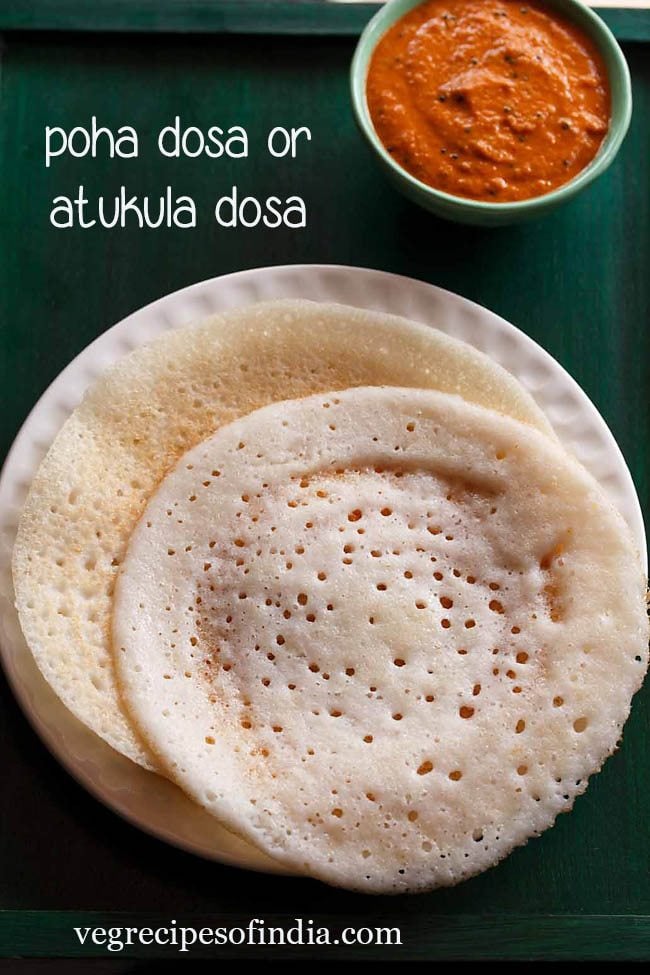
I chanced upon this atukula dosa decades back in Chandra Padmanabhan’s cookbook: “Simply South: Traditional Vegetarian Cooking”. Since then I have been making them often.
There are a few variations in making this recipe. What I share is an Andhra Style Poha dosa.
The method to make poha dosa is slightly different than the one for regular Dosa. Here the rice and poha are soaked in buttermilk. Then ground and fermented for 4 to 5 hours.
In fact, I like these dosas so much that I usually pair them with tea or coffee. When I made the dosas this time, I served poha dosa with red amaranth sambar and sesame coconut chutney.
These avalakki dosa remain soft even after some hours. Thus making them excellent for a tiffin box snack with a side of some dry powdered chutney like an Idli Podi. You can also pack for lunch or for short journeys.
While cooking them you can cook one side or both sides. They make for an excellent weekend or Sunday breakfast or brunch.
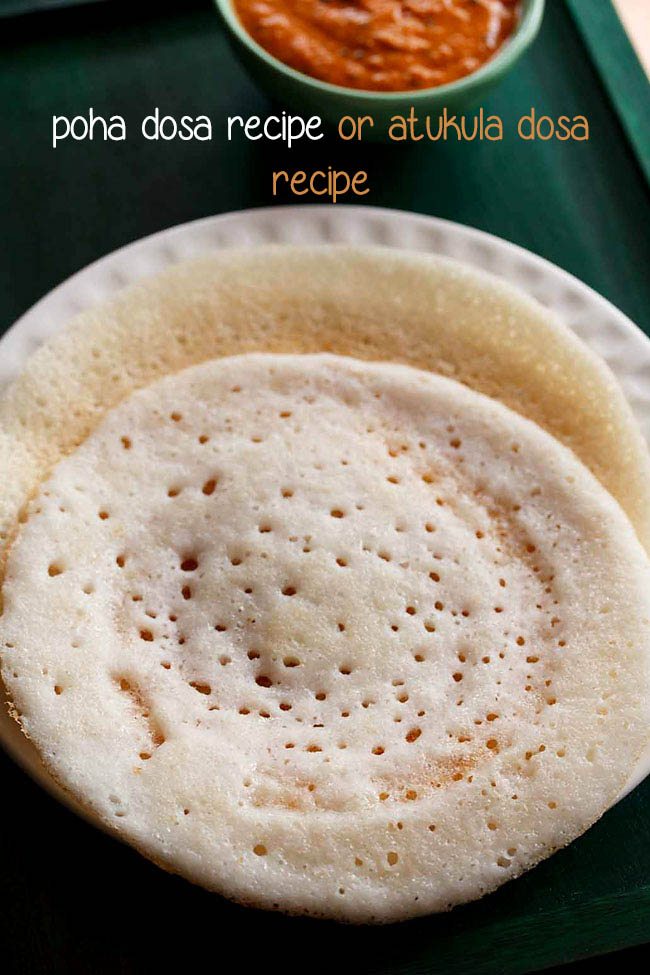
How to make Poha Dosa
Making Aval Dosa Batter
1. In a bowl, take ½ cup fresh curd (yogurt) and 1 cup water. Mix very well with a wired whisk to make buttermilk.
Don’t use sour curd as by the time the batter is fermented it will become very sour.
Alternatively you can use 1.5 cups of buttermilk.
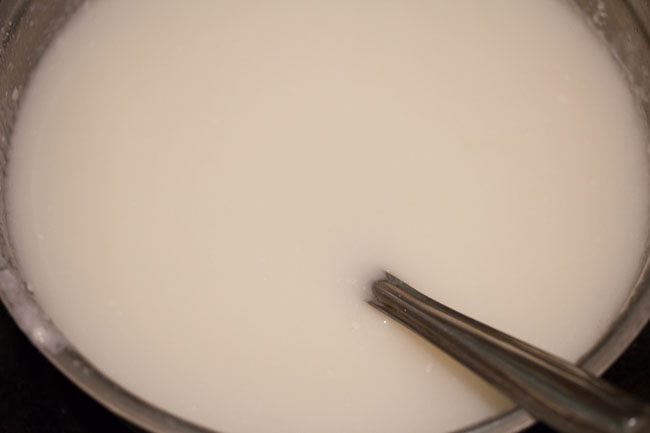
2. In a bowl, take 1 cup idli rice (parboiled rice) or regular rice like sona masuri or parmal rice.
Also add ½ cup thick poha (flattened rice) and 2 tablespoons urad dal (husked black gram).
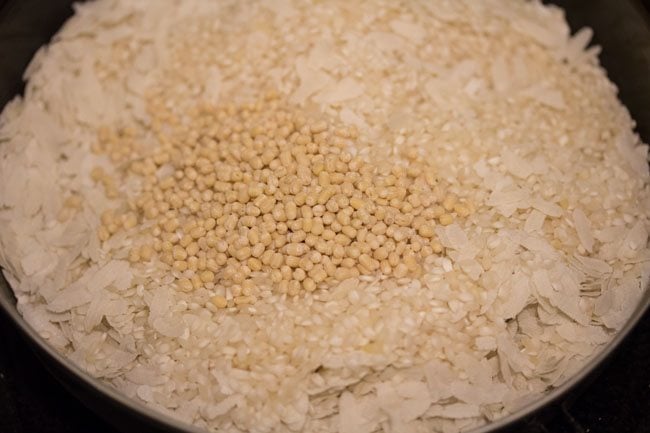
3. Rinse the rice, poha and urad dal a couple of times with fresh water. Then drain all the water.
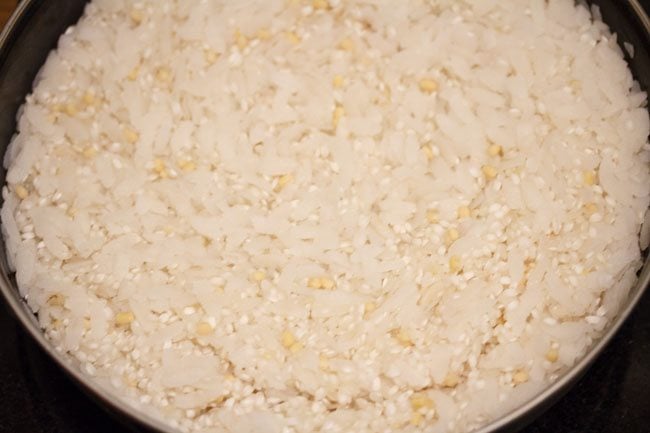
4. Now pour the prepared buttermilk (curd+water mixture) in the rinsed rice, poha and urad dal.
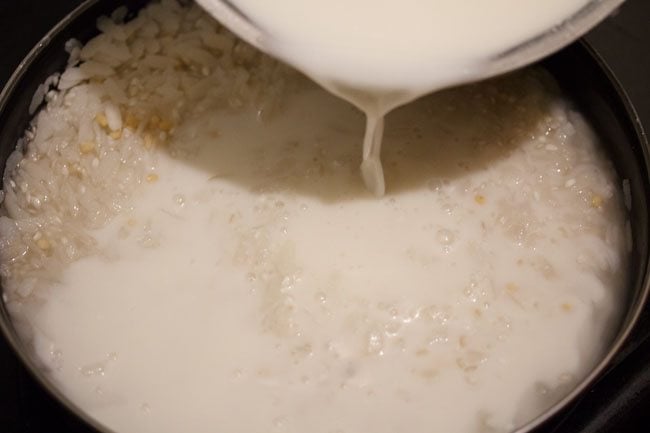
5. Gently stir the mixture.
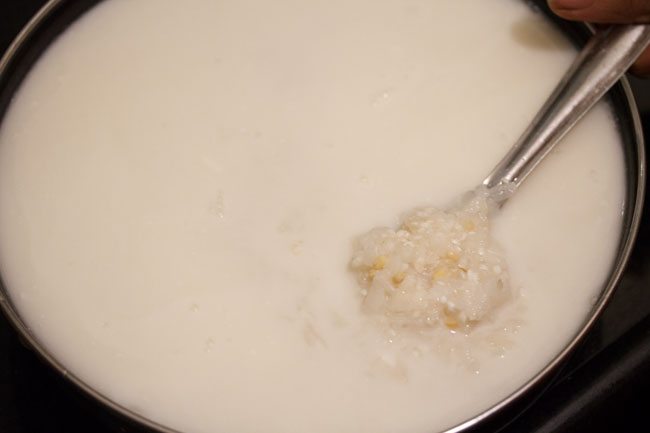
6. Soak the rice, poha and urad dal in the buttermilk mixture for 2 to 3 hours.
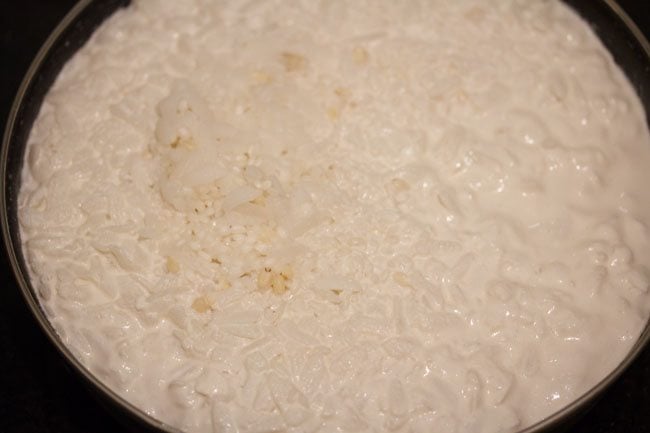
7. Drain and reserve the soaked liquid. Add the soaked rice, urad dal and poha to the blender jar.
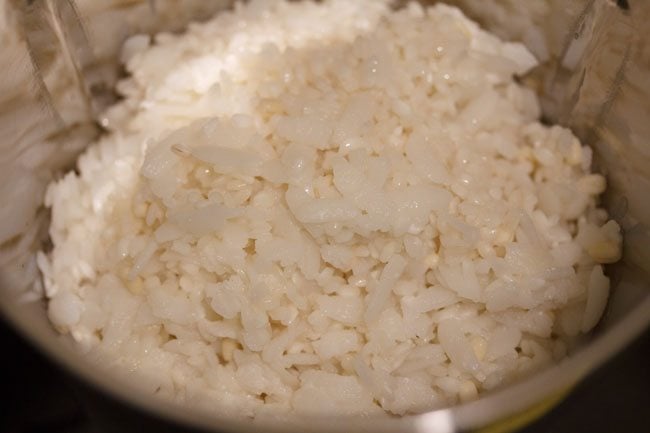
8. Grind or blend to a smooth batter using all of the reserved soaked liquid.
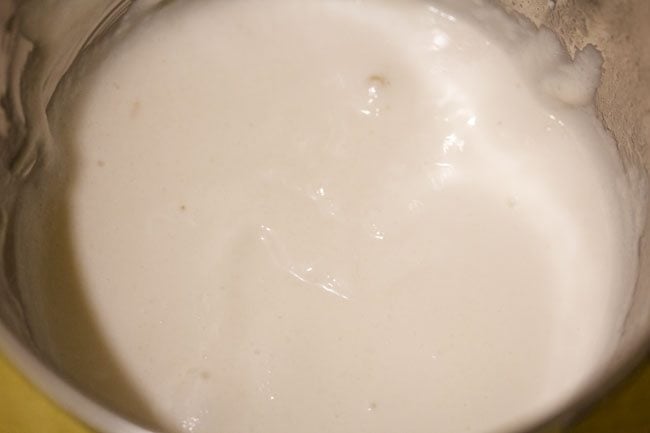
9. Remove the batter to a bowl and add ¼ teaspoon baking soda and 1 teaspoon salt.
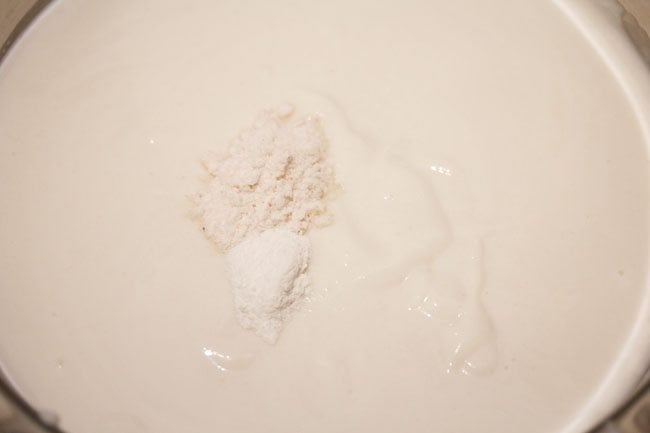
10. Mix well.
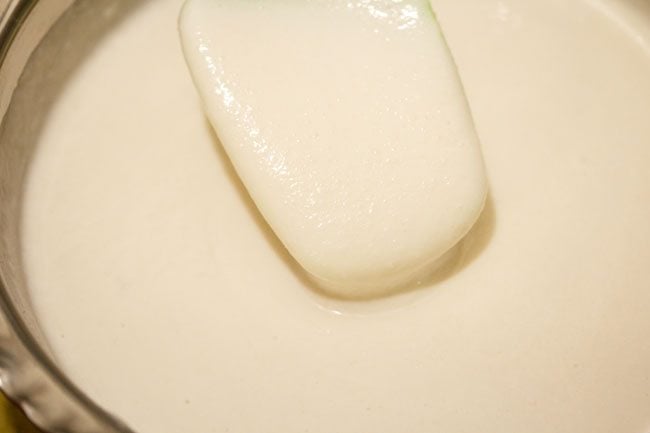
11. Ferment for 4 to 5 hours or as required. The batter should have a nice sour aroma.
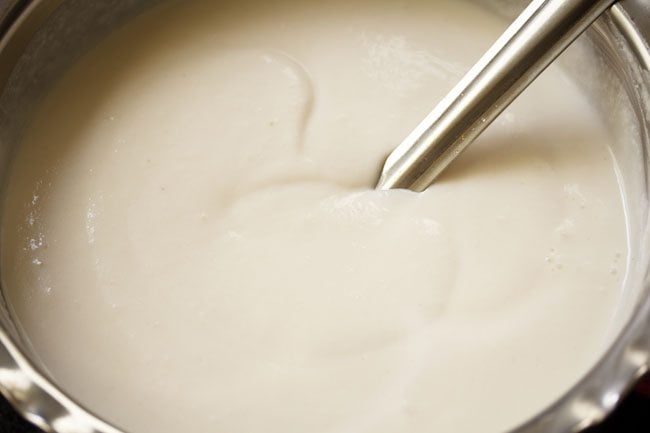
Cooking poha dosa
12. Heat a tava or griddle or a cast-iron skillet. Brush the pan with some oil. You can also spread the oil with an onion halve dipped in some oil or with a kitchen paper towel that has been folded and dipped in a bit of oil.
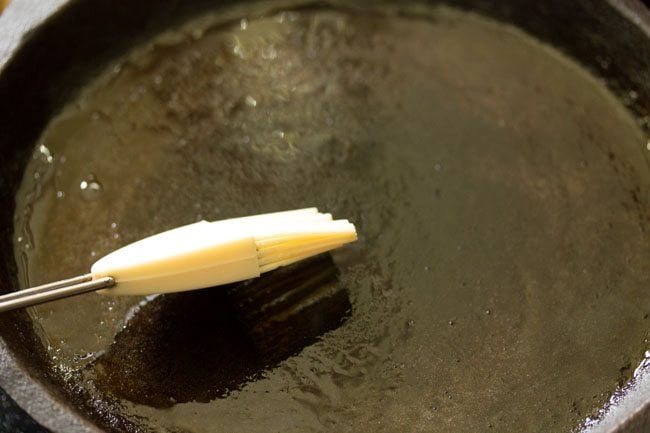
13. Take a ladle of batter and pour it on the pan. Keep the heat to low or medium-low so that you are able to spread the batter evenly.
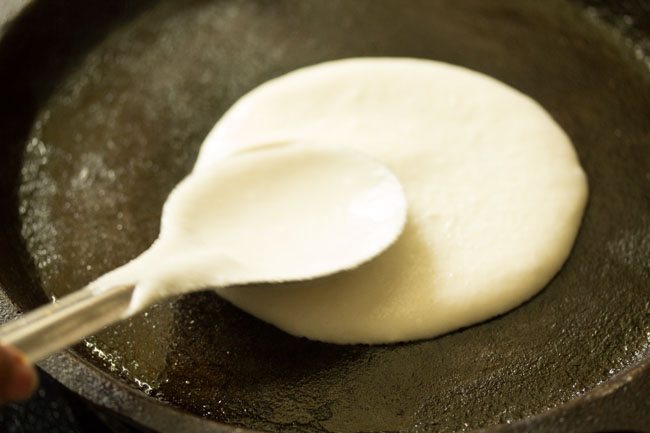
14. Starting from the center, spread the batter in a circular motion with the back of a spoon.
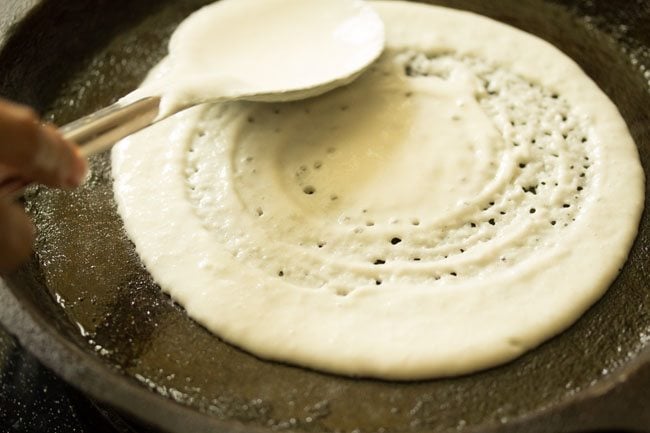
15. Make a slightly thick dosa and not thin like the regular dosa.
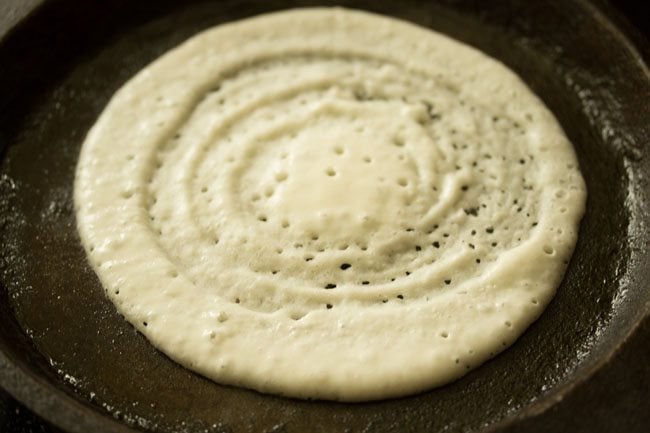
16. Drizzle oil around the edges and in the center.
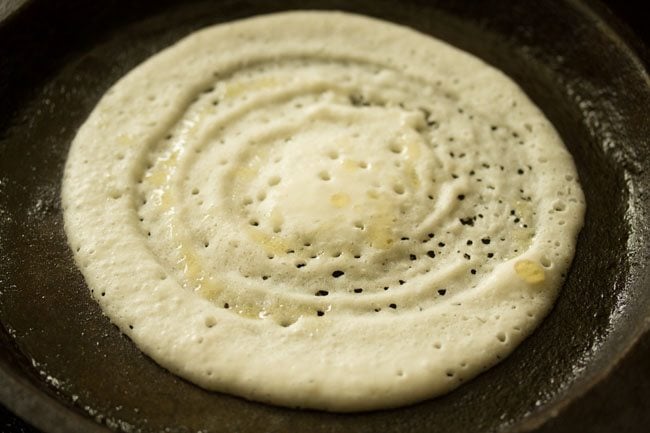
17. Cover the dosa with a lid.
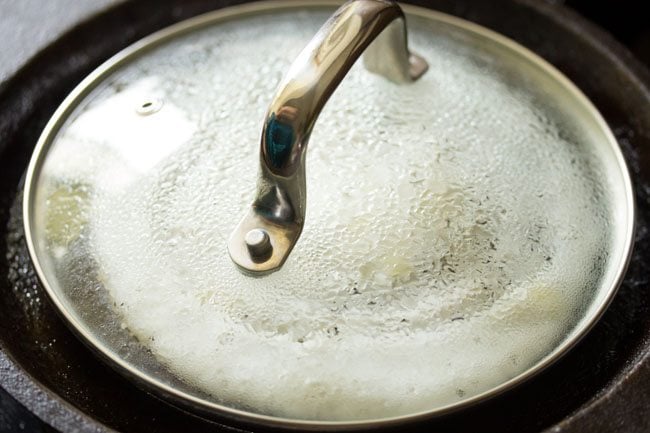
18. Cook them for 1 to 2 minutes or till the base is cooked and crisp and the top is soft and spongy.
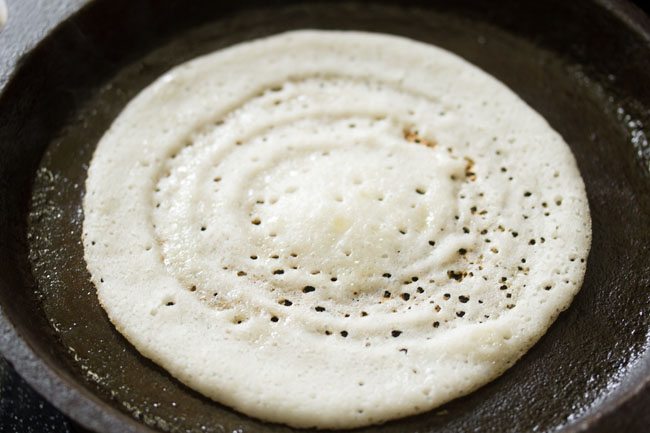
19. Flip the dosa and you can cook the other side if you want. Spread the oil which we had drizzle on top with a spoon.
You can choose to cook just one side or both sides of the dosa.
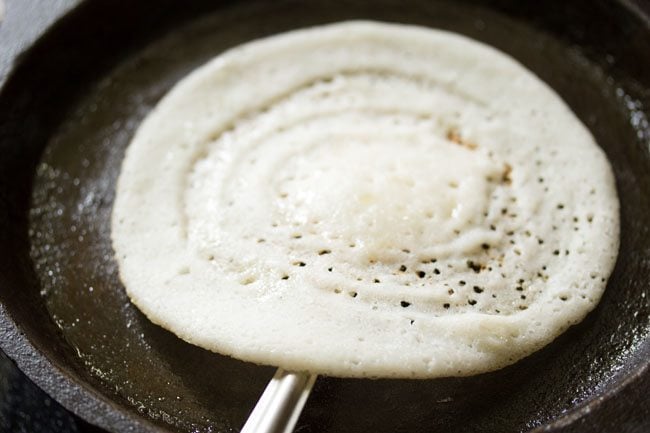
20. Similarly, make the rest of the dosa with the remaining batter. Refrigerate any leftover batter for 1 day. Don’t store the batter for more than 1 day as curd is used in the recipe.
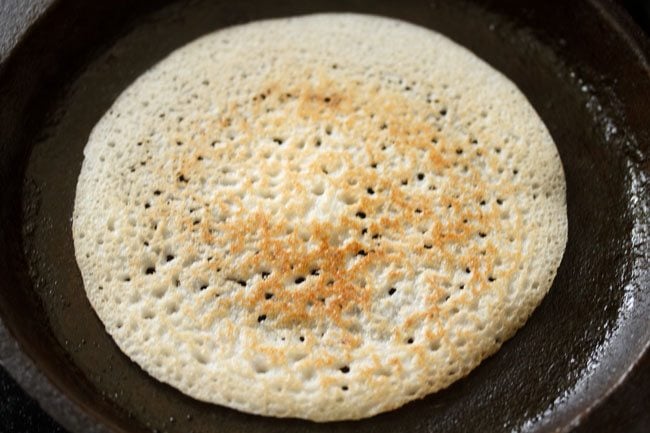
Serve Poha dosa hot or warm with coconut chutney or sambar. It can also be served with other chutney varieties like onion chutney, tomato chutney, peanut chutney, ginger chutney or idli podi.
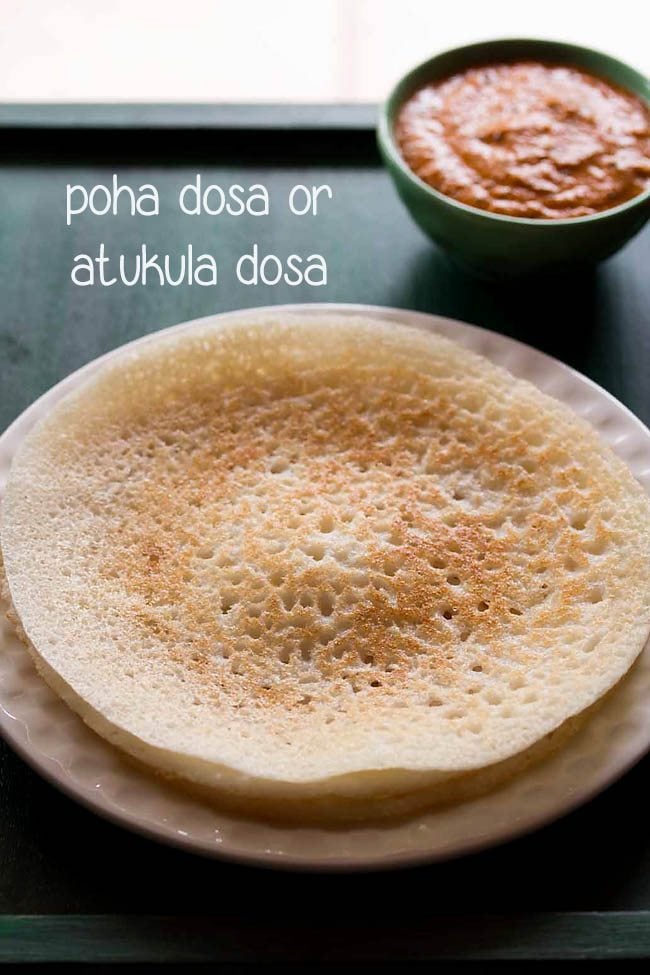
More tasty Dosa varieties:
Please be sure to rate the recipe in the recipe card or leave a comment below if you have made it. For more vegetarian inspirations, Sign Up for my emails or follow me on Instagram, Youtube, Facebook, Pinterest or Twitter.
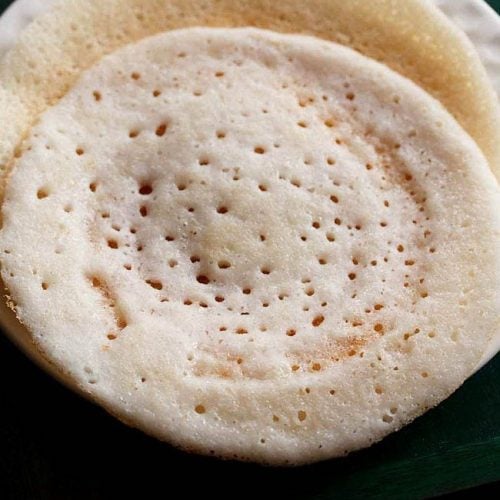
Poha Dosa | Atukula Dosa
Ingredients
- 1 cup idli rice or parboiled rice or regular rice like sona masuri rice, parmal rice – 200 grams
- ½ cup thick poha (flattened rice or parched rice) – 50 grams
- 2 tablespoons urad dal (husked black gram)
- ½ cup Curd
- 1 cup water for mixing with curd
- ¼ teaspoon baking soda
- 1 teaspoon salt or add as per taste
- oil as required
Instructions
Making aval dosa batter
- In a bowl, take fresh curd (dahi or yogurt) and water. Mix very well with a wired whisk to make buttermilk. Don't use sour curd.
- In an another bowl, take idli rice or parboiled rice or regular rice like sona masuri rice, parmal rice. Also add thick poha (flattened rice) and urad dal (husked black gram).
- Rinse the rice, poha and urad dal a couple of times with water. Then drain all the water.
- Now pour the prepared buttermilk (curd+water mixture) in the rinsed rice, poha and urad dal.
- Gently stir the mixture.
- Soak the rice, poha and urad dal in the buttermilk mixture for 2 to 3 hours.
- Drain and reserve the soaking liquid. Add the soaked rice, urad dal and poha in the blender jar.
- Grind or blend to a smooth batter using all of the reserved liquid.
- Remove the batter in a bowl and add baking soda and salt. Mix well.
- Ferment the batter for 4 to 5 hours or as required.
Cooking poha dosa
- Heat a tava or griddle or a cast iron pan. Brush the pan with some oil.
- Take a ladle of batter. Spread in a circular motion with the back of a spoon. Make a slightly thick dosa.
- Drizzle oil around the edges and on top of the dosa. Cover the dosa with a lid.
- Cook poha dosa for 1 to 2 minutes or till the base is cooked and crisp and the top is soft and spongy.
- Flip the dosa and you can cook the other side if you want.
- Similarly, make the rest of the avalakki dosa with the batter.
- Serve poha dosa hot with coconut chutney or sambar.
- Any leftover batter can be refrigerated for 1 day.
Nutrition Info (Approximate Values)
This Poha Dosa post from the blog archives first published in May 2012 has been republished and updated on 22 July 2021.












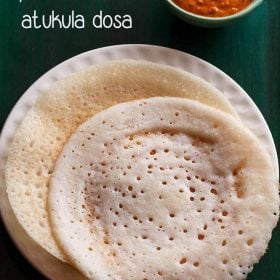
Hi dassana
I tried the mysore-masala-dosa and onion rava dosa.they came out well. My husband loved it. You mention basmati rice in recipe. Instead of basmati rice Shall I use dosa rice or idli rice or sonamasoori rice. Please help me. Thanks a lot
welcome sarika. thanks for giving positive reviews on dosa. you can use any regular rice. sona masoori rice will be fine.
Hi dassana,
yesterday i tried this recipe.it was just awesome,thank you so mush to share such a nice recipe with us.god bless u
welcome debarati. thanks for your positive feedback and blessings. keep visiting.
Thanks for the awesome recipe.I tried it out and it turned excellent. So couldn’t resist myself without commenting.This is the first time im writing though i tried many recipes from various websites.
welcome harikavijay. glad to know that you liked the recipes from this blog.
Thanks for the awesome recipe.I tried i out today and it was excellent. Couldn’t resist myself without writing the comments.This is the first time im writing though i tried a lot of recipes from various websites.
welcome harikavijay. glad to read your positive feedback on recipes.
Hi,
You have mentioned Poha in the recipe. Is it the thin or thick variety?
the thick variety. however thin variety of poha can also be used.
It came good. Soft and tasty…. thanks a lot…. my hubby had well and we both had a sound sleep 🙂
welcome sara.
Hi…
very clear explanation. good job. i wished to eat poha dosa with that chutney also. looks so soft. As soon as read this i soaked the items to prepare for dinner. I didn’t have grinder and with mixie am going to do. Is this same proportion to grind in mixie? Then another one doubt, If i mix the baking soda once means after left over batter can i keep it in fridge and make it use for breakfast? thanks in advance.
yes the same proportion. after mixing baking soda, you can keep the batter for the hours mentioned in the recipe and then keep in the fridge. but use the batter in one day.
Tried your jhatpat dosa recipe although I used slightly different proportions of ingredients and methi seeds instead of urad dal.Fantastic !! Soft, sumptuous and spongy dosas. Very easy to make with very little oil required ( almost non existent if one wishes except some required for the initial seasoning of pan) so very healthy. Thanks
welcome shilpa. my thanks to you for this detailed feedback on poha dosa as it help other readers too.
I am first time visitor here. Loved your blog and the recipe. I am sure going to try it. My folks add a couple tsp of methi seeds for avalakki dosa.
I also liked your way of responding to each comment, shows that you r in touch with your readers. Keep up the good work!
thanks vasudha. readers queries and tips are always welcome. thanks for sharing your tip of adding methi seeds.
Hi Dassana
Great blog,wonderful recipes. I made your dosa and chutney and they came out beautiful. My family loved it. In fact your mail came just as I was serving breakfast! Thank you so much.
thanks poornima.
Hi Dassana
Great blog,wonderful recipes. Made your dosa and chutney. Came out beautiful. My family loved it. I actually saw your mail just as I was serving breakfast! Thanks so much.
Madam,
Beautiful poha dosa. I was searching for recipe of regular Dosa. Instead I got this.Where is recipe of regular Dosa?
on this link you will get a detailed post to make dosa batter as well as dosa.
https://www.vegrecipesofindia.com/masala-dosa-recipe-how-to-make-masala-dosa-recipe/
Sorry,Sorry on some other blog I could not find Dosa recipe and inadvertently I have stated that on your site I could not get it.Sorry again and thanks for taking to much trouble for giving good recopies with beautiful photos.They are giving the feeling that it is just kept on dining table.
In the morning we had breakfast of poha dosas and coconut chutney prepared as shown by you. Poha dosas just came out as shown in your pictures. Chutney was also as we get in south Indian hotels.Thanks.
thats nice to know shrikant. glad to know you & your family enjoyed the breakfast.
Hi,
Just recently i came to know about your blog.. and its simply awesome. You are doing a excellent job.. Keep posting new recipes and rock on!!
The very first item i tried from ur blog was this poha dosa. Since the climate is my place is very cold now, the batter didn,t ferment even after keeping the batter the whole night. Morning i added baking soda and tried making dosa. But it was not up to d mark. So can you help me with any solution for it.
Thank you so in advance. I have one small request also… When ever ur posting cake recipes pls also include how to make in microwave and if possible in cooker. i don’t have oven. I just have microwave grill convection. 🙂
thanks vasundhara. the poha dosa does not require much fermentation time. did you see bubbles appearing in the batter when you added baking soda. these dosas are very soft and porous. so i guess the baking soda must have become outdated.
all the cakes, breads & pudding recipes i have posted till nov 12 have been made in the microwave oven in convection mode except for one old post of eggless chocolate cake made in a pressure cooker. there’s not much difference in baking in a regular oven or microwave oven. except for that in while baking in microwave oven in convection mode, the top browns faster.
actually while baking in a microwave oven, you have to use the convection mode. check your manufacturers’s guide for the details. i will be writing a separate post on this topic as i get a lot of queries regarding the same.
Hi dassana,
Thank you so much for the reply. I thought the fermentation is like for normal dosa where the batter will rise 🙂 Anyways will try again and let you know sure for the results.
Mine is microwave+grill only. So in this case, do i need use combination?? No is it.. I just have to use microwave option only right ?? 🙂
Whats the meaning of your name.. Its very different and very nice
next time do let me know the results for the poha dosa. try reading online on what can be made in the microwave plus grill option. i can only think of sandwiches or patties when i hear the word grill 🙂 i don’t think cakes can be made in this option.
one reader harsha, did try the eggless orange cake first in microwave and then in microwave plus grill method. i have never used this mode, so don’t know what would be the results. i guess the only option is to make the cakes in microwave oven. you can try this eggless orange cake as it can be made in the microwave. here’s what harsha has to say on this link: https://www.vegrecipesofindia.com/eggless-orange-cake/#comment-49806
generally cake batters that need to be microwaved have a lighter and liquid consistency than the ones that are made for regular baking.
“dassana” is a buddhist word in pali language which translates to “search for insight”.
Dassana,
I have looked on to the comment, so let me try that and tell my testing and trials 🙂 “Batter for cake should be lighter and liquid” – is very important and main tip for beginners like me. Thanks a TON for that 🙂 Will update you soon after my testings 🙂
thanks vasundhara and do give the feedback.
this recipe of dosas is quite unusual, but the ingredients here cannot go wrong! I’m gonna try this out!
i made it yesterday with sambar and sesame coconut chutney and the feast was fabulous..thanks Dassana
thats great suhani and welcome dear.